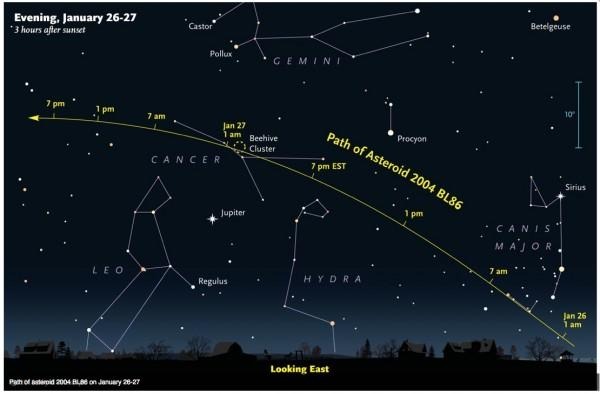A Huge Asteroid Is About To Buzz Earth
Try not to let it worry you, but a 550 meter wide chunk of space rock is going to hurtle past Earth at more than 33,000 mph very soon, another near-miss asteroid a celestially-slight 745,000 miles from our planet. While it may not sound all that close – the moon is on average 239k miles from us – asteroid 2004 BL86 is enough to have astronomers from NASA and other space agencies tracking its location closely, given the potential for destruction (or even species-level catastrophe like the "colossal bad luck" that saw the dinosaurs wiped out) the impact of such a rock would have.
It's not an idle worry, though NASA and other space agencies are clear that we needn't worry about 2004 BL86 wiping us out. The latest trajectory charts show that the tumbling rock will pass by us without incident.
Better, then, to hope that you can spot it. That's not so far-fetched, and you needn't have an expensive telescope to do it: a set of decent binoculars and some luck with the weather conditions.
The fly-by will be clearest to Earth-based observers late on Monday, January 26th, for those in North America. The closest point will be at around 11:19 EST, with 2004 BL86 moving from south to north, below the Earth's orbit to above.

"While it poses no threat to Earth for the foreseeable future, it's a relatively close approach by a relatively large asteroid, so it provides us a unique opportunity to observe and learn more," NASA's Don Yeomans, the retiring manager of the Near Earth Object Program Office at the Jet Propulsion Laboratory, said of the incident.
That's in no small part becuase 2004 BL86's passing will be the closest of any known space rock of its scale, until asteroid 1999 AN10 hurtles past Earth come 2027.
In fact, if you're going to be concerned about anything, 1999 AN10 should probably be occupying more of your thoughts. Although it's expected to pass around 240,000 miles from Earth in 2027, NASA scientists had at one point predicted the possibility that the we do in fact lie within the "uncertainty ellipse" within which the asteroid's route could fluctuate on future passes.
AN10 now could, according to NASA's latest estimates, come within 19,000 miles of Earth if it's at the extreme end of that ellipse, though we're still far from being at risk.
MORE NASA
